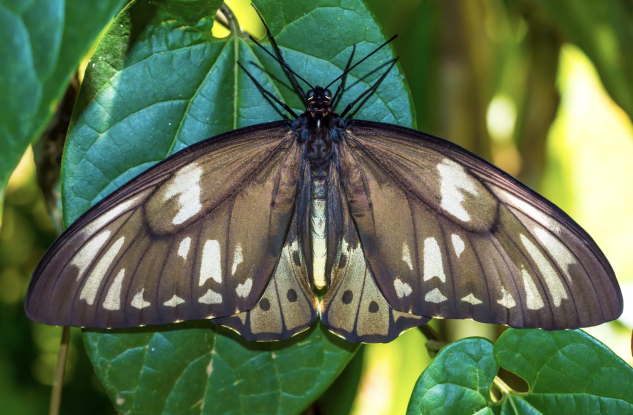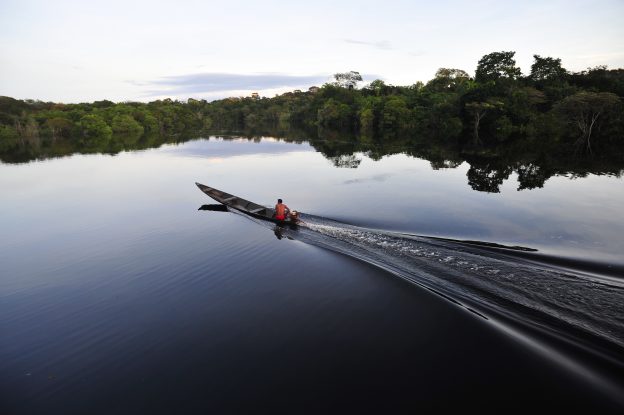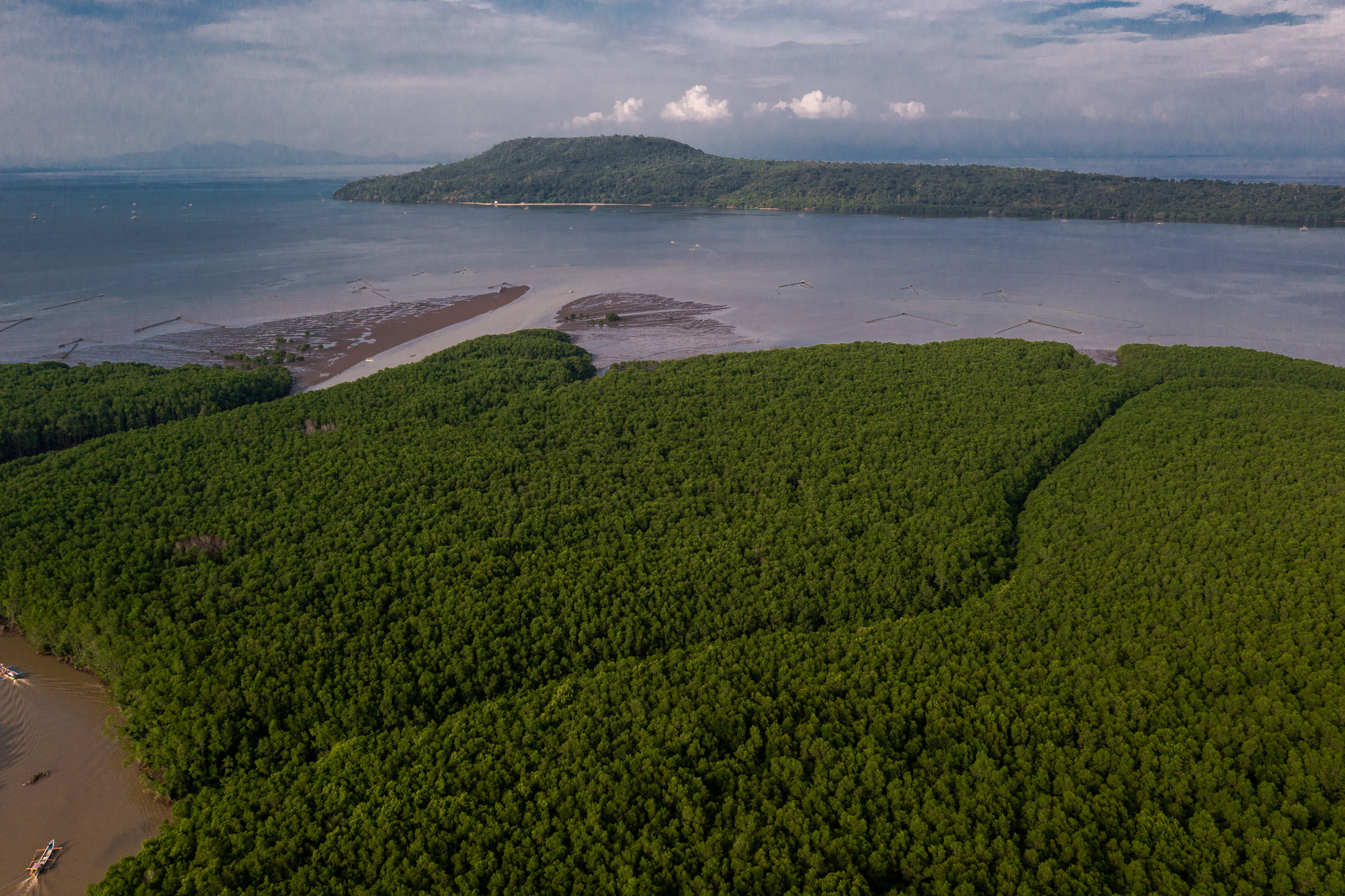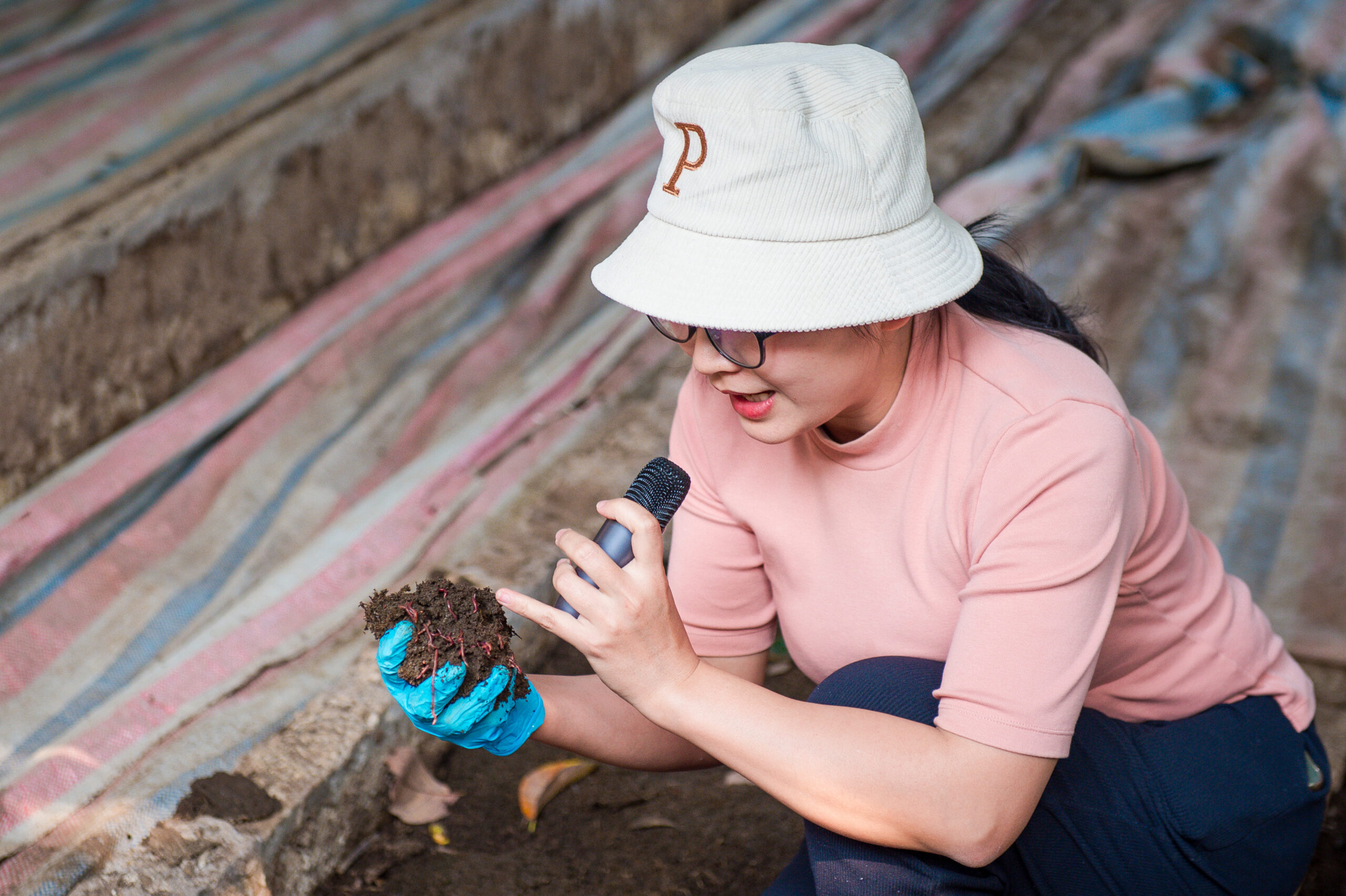Forests News sat down with Charles Emogor, a postdoctoral researcher at the University of Cambridge and the Center for International Forestry Research and World Agroforestry (CIFOR-ICRAF) consultant and Lauren Coad, CIFOR-ICRAF scientist and co-founder of the Sustainable Use of Wild Species Transformative Partnership Platform (SU-TPP), to discuss Emogor’s recent work on wild meat sustainability in Nigeria and its significance in the broader discourse on sustainable wildlife use and biodiversity in his native country.
“I suppose you could say I was following my inner child,” said Charles Emogor, reflecting on his journey into wildlife research and advocacy. “It wasn’t easy. Seven years ago, I was knocking on doors trying to learn how to write a grant proposal.”
Happily, his perseverance paid off. Today, Emogor is one of the few scientists in Nigeria documenting and analysing patterns in wild animal hunting, trade and consumption.
“Striking that balance between animals and humans — that’s my hope. That’s my dream,” shared Emogor. “We need to acknowledge that local communities depend on wildlife and we also need animals to remain in the forests— for people, for future generations and for the health of our ecosystems .” But is such a future within reach? Credit_Joel Porter (1)
Defining sustainable use is complex
There are many interpretations of what it means for the exploitation of wild species to be “sustainable.”
The Convention on Biological Diversity (CBD, Article 2) defines ‘sustainable use’ as “the use of components of biological diversity in a way and at a rate that does not lead to the long-term decline of biological diversity, thereby maintaining its potential to meet the needs and aspirations of present and future generations.”
However, there is disagreement on how much it is possible to ‘use’ wild animals without leading to their long-term decline. At one end of the spectrum are those advocating for total hunting bans. Others suggest the promotion of policies and practices that would permit communities to continue hunting, selling and consuming wild meat under certain conditions, arguing that resources that are used are valued, and therefore more likely to be protected.
The “true” definition of sustainable use is likely a nuanced one. What is sustainable in one context may not be in another. Changing conditions — from economic shocks to ecological baselines — can shift sustainability thresholds.
Take COVID-19. One of Emogor’s studies during the lockdowns in Nigeria found that hunters consumed more of their catches than they sold, and both the number and value of animals hunted each month. These findings suggest that people became more reliant on wild meat for food and nutritional security during the health crisis, putting further pressure and strain on already fragile animal populations.
Likewise, if wildlife is already depleted before a socio-economic shock, such as COVID-19, there is no buffer for communities that rely on wild meat during difficult times.
“To the best of our knowledge, this is the first quantitative interspecific study assessing changes in wild meat hunting and use during the pandemic,” Emogor told Forests News.
Data, behaviour and local preferences matter
Beyond exceptional events, building sustainable solutions for wildlife use requires researchers to consider multiple factors. One approach to reducing hunting pressure is to identify and promote alternative protein sources from non-endangered animals — but for this to succeed, these alternatives must align with cultural norms and consumer preferences.
To this end, Emogor and his team published a study on the palatability — or consumer meat preferences — of 96 species, seeking viable protein substitutes. Critically endangered pangolins topped the list in terms of taste, rivalling only certain rodent species. However, finding a sustainable replacement for such a delicacy is more complex than simply swapping pangolins for rats on the menu.
“Palatability is just one piece of a massive puzzle,” said Emogor. “You also need to think about which species are legal to hunt, as well as other non-inherent qualities of the meat like access, price, and cultural values.”
Behavioural science also plays a role. In a three-year study observing 33 hunters in Southeast Nigeria, researchers found that hunters were more likely to set out during full moons, when natural light was greater. The most striking finding, however, emerged when examining the relationship between time spent hunting and animals caught: hunters were generally less likely to catch anything the longer they stayed out — unless they caught something early on. In those cases, the longer they stayed, the more animals they caught on average.
The seeming contradiction may be explained by hunters setting a target number of animals before leaving and refusing to return until they reached it. This type of loss-averse decision-making has never been documented among hunters before. However, it has been famously observed among New York taxi drivers, who tended to work longer hours on slow days to meet predefined income goals.
Building better baselines andpolicy
Another barrier to defining “sustainable use” is the lack of comparable data and cross-sector collaboration. For instance, wildlife researchers studying international trade may have little interaction with those examining domestic wild meat consumption.
The WILDMEAT Database, hosted by CIFOR-ICRAF, is working to close these gaps. It contains the largest collection of African wild meat studies to date, and Emogor is among the scientists benefiting from its open-access resources for his own publications.
“Most of my data was collected using the protocols from the WILDMEAT Database,” Emogor said.
The database was recently used to conduct the first comparative study of hunting patterns in African tropical forests. Among its findings: hunters are increasingly using guns instead of wire traps (snares) or spears — a shift that could place greater pressure on species such as duikers, chimpanzees and other wildlife.
Despite these advances, much remains to be done to build the comprehensive evidence base needed to inform and influence national hunting policies. DJI_0070 (2)
Surprising findings on pangolins — and why they matter
Pangolins are especially close to Emogor’s heart — so much so that he founded the Pangolin Protection Network, also known as Pangolino, to raise awareness of this shy, armoured creature through art.
Pangolins are among the most illegally trafficked and poached animals in the world. Their scales, made of keratin — the same material as human fingernails — are ground for use in traditional Chinese medicine, driving significant demand in China and Southeast Asia.
“Pangolin populations in Southeast Asia are heavily depleted,” said Lauren Coad, CIFOR-ICRAF scientist and co-founder of the Sustainable Use of Wild Species Transformative Partnership Platform (TPP). “So the natural assumption for researchers in Central Africa was that people were hunting them for sale into the international trade.”
However, Emogor’s latest publication revealed a different reality: in Cross River forest landscapes, pangolins are more often killed for their meat than for their scales.
“This is the biggest paper from my PhD in terms of the message,” said Emogor. “We found so many lines of evidence showing that meat was a bigger motivator than scales for hunters that it’s hard to argue otherwise.”
Pangolin meat is valued for its “sweet” taste, according to Emogor. Many hunters are unaware of the commercial value of the scales, often burning or discarding them before consuming the meat.
While pangolins are protected under CITES Appendix I, which bans commercial trade, the treaty does not address animals hunted for wild meat consumed domestically. Moreover, research on international trade and research on domestic consumption are often conducted in isolation, with little exchange between the two communities.
“I think this is a key policy message,” said Coad. “If you base your policy only on exploitation for international trade, you’re going to set the wrong quotas and you won’t be able to develop effective interventions. We have to start putting these things together.”
Both researchers emphasised the importance of engaging with other sectors, such as climate change, to develop more effective interventions that deliver tangible benefits at the local level.

Trust, community and the next generation
When it comes to illegal or endangered species such as pangolins, hunters are often reluctant to self-incriminate by speaking with researchers.
Emogor has spent the past several years working to overcome this challenge. His background as a native of Southeast Nigeria has proved invaluable for building rapport with local communities and sharing knowledge about the need for sustainable practices.
“I find that I’m able to chat with people who, as an outsider, would have been harder to talk to because I’m from this region,” said Emogor. “I’ve spoken with people who have killed pangolins and other endangered animals, and they allow us to collect data. It’s a relationship built on trust that began with familiarity. The lack of judgement is helpful for both parties.”
His NGO, Pangolino, provides another important avenue for relationship-building. Each month, he and his team host conservation education talks in schools and distribute pangolin-themed notebooks, T-shirts, and colouring books. They have also developed a Pangolin Scale Converter — a tool that helps quantify the number of pangolins killed based on scales seized from illegal trafficking.
In 2024, Emogor received the Animal Action Award from the International Fund for Animal Welfare for his NGO work. Although balancing the demands of research with running a grassroots organisation can be challenging, he has no regrets.
“It’s been a way for me to give back to the community; I think it’s really fulfilling,” he said. “Something else that gives me joy about Pangolino is that we now have a team of staff and volunteers, and we can help them get a foot in the door to conservation careers.”
LEP08309 (1)
Other groups are also stepping up to support the next generation of wildlife conservationists, including CIFOR-ICRAF’s Transformative Partnership Platform on the Sustainable Use of Wild Species (SU-TPP). This consortium works to advance wild species research and sustainable practices while providing resources and platforms for young scientists like Emogor.
Giving the next generation the opportunity to follow their inner child into a career in wildlife conservation is a vital step toward defining what ‘sustainable use’ of wild species could look like across Africa.
Acknowledgements
The SU-TPP is a diverse coalition of stakeholders that – through applied research, capacity development and on-the-ground initiatives – generates evidence and tools that support the sustainable, equitable and safe use of wild species. The coalition is worldwide and includes policymakers, universities, practitioners, Indigenous Peoples and local communities.













